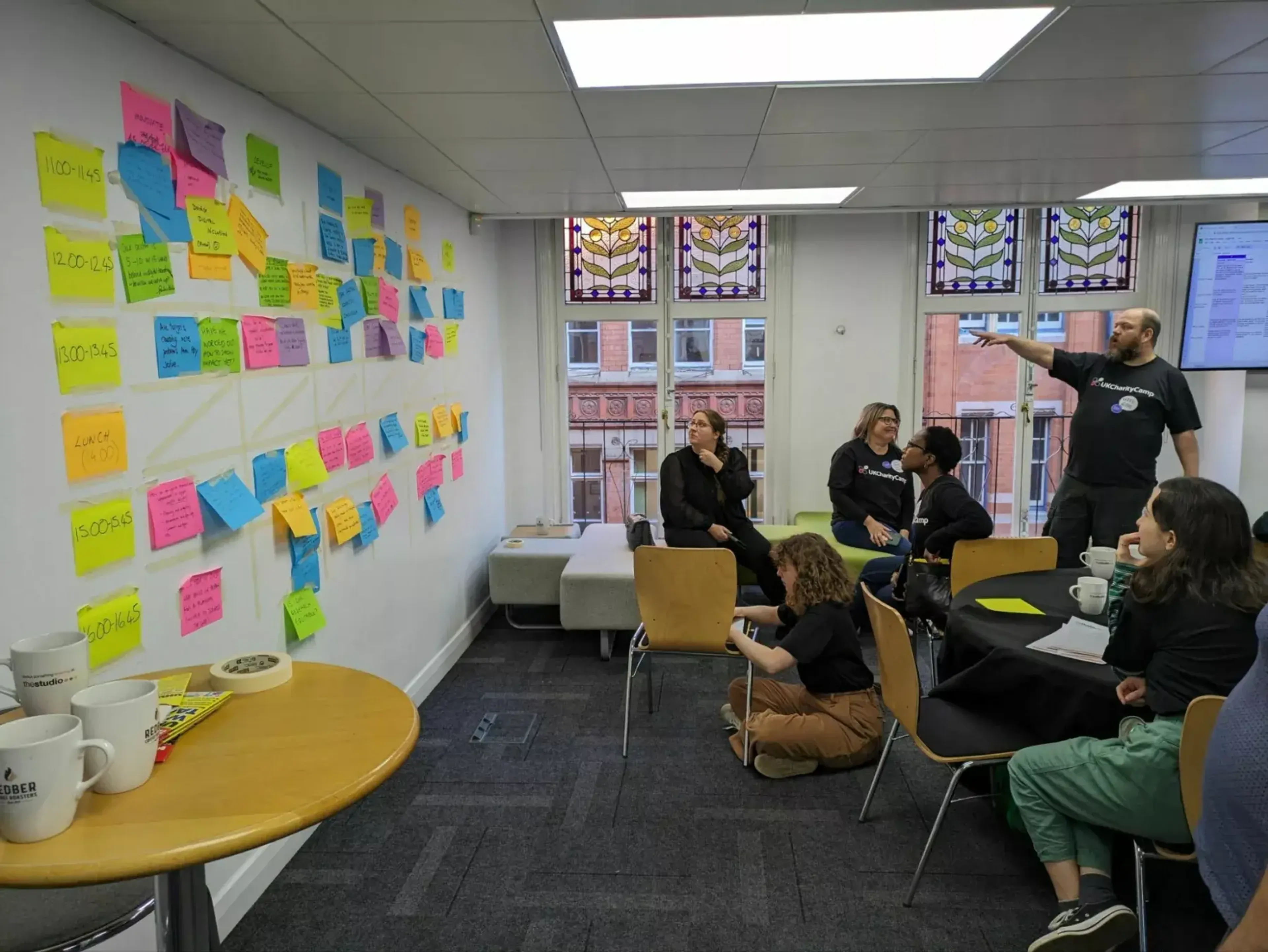
Francis Bacon
Director
In November, I went to UK Charity Camp 2023 in Birmingham. Charity Camp is an improvised ‘unconference’ run by digital agency Neontribe which offers digital practitioners working in the charity sector a space to discuss the challenges, opportunities and trends around digital in the charities.
It was heartening to meet with so many individuals dedicated to advancing digital change in UK charities, and hear about the varied work taking place across the sector.
Based on observations from the day, here are three of my reflections on how effectively charities are using digital ways of working.

For medium and large sized charities, digital roles and ways of working were first introduced in communications and fundraising departments in the 2000s and built up in the 2010s.
Over the years, many have built up capable teams managing their websites, email and social media, broadening the focus of their digital efforts to designing user journeys for those considering giving time or money to the charity’s cause.
While there is definitely still room for improvement - and some charities are further ahead than others - there are more and more examples emerging of what good looks like for charity digital fundraising.
By contrast, there are far fewer examples of charities which have successfully transformed their service delivery using digital ways of working.
That isn’t to say there’s no progress at all. Compared to parts of government and the private sector, for instance, there is more of a widespread recognition of the need for research and co-design with service users, on the importance of accessibility and inclusion and on addressing digital exclusion.
In general, however, charities aren’t giving enough focus to holistic service design, to collaboration in multi-disciplinary teams, to test and learn approaches and to using digital to improve overall reach and impact.
Many more charities could effectively use digital where it could have the most impact: in delivering their services.
Many charities rely on grants from a small group of philanthropic foundations for larger projects and new initiatives. For a few years these institutional donors focused on funding digital transformation in a concerted effort to lift the sector’s capability.
When Covid struck, the support for digital increased, providing much-needed emergency support so that charities could quickly adapt services and enable remote working.
But almost all of this funding was dedicated to specific one-off projects, with charities usually having to look elsewhere to fund their ongoing services. For instance, during my time leading digital teams at Samaritans we were supported by generous foundations, but even those with a strong understanding of digital were inclined to support ‘shiny’ new developments rather than valuable ongoing services
Now in the post-pandemic era, there is less funding available from foundations for digital transformation. In a world of complex and systemic problems it might seem hard to see the value of ‘digital’ as compared with the priorities of reducing inequality, improving health and education or enabling the climate transition.
But digital is a means to an end. It is not in competition with these goals but instead the way to achieve them. The reality is that charity digital services need long-term support, and one-off project funding is not enough.
As a sector, there needs to be a conversation about how to fund long-lived digital services - and perhaps services in general - in a way that enables them to be sustained and continuously improved.
Even though the charity sector is built on the values of community, volunteering and mutual support, there are surprisingly few examples of open source approaches being used to share and reuse services and data across the sector.
Charities do use open source technologies when they are mature and trustworthy (open source content management systems are a particular example), but there are very few examples of charities sharing ownership of digital assets and building upon the work of others in the sector.
This is an issue which needs more concerted effort to tackle: In a time of tight budgets, reusing the technologies of other organisations could dramatically reduce costs.
So why don’t charities share and use open source code more? It’s partly because they lack the capability: many charities have been reluctant to hire developers who know how to adapt and maintain code. It’s also partly about trust. Those in charities making technology decisions need to know that open source components will be reliable.
However, the few examples that exist of successful open source initiatives - like Hyde Housing’s Universal Credit Support Tool and the work on Open Referral - serve as a testament to just how much potential there is in taking this approach.
Sector bodies, funders and charities themselves could do a lot more to break down the barriers to using open source approaches as a means of helping the whole sector.
These challenges around digital strategy, technology and fundraising are universal across the charity sector, and particularly in an era of financial instability, will not be easily overcome.
Which is why, in order to be tackled effectively, they will have to be tackled collaboratively.
We are indebted to events like Charity Camp in bringing together people with the skills, knowledge, and dedication to work collectively to address the sector’s biggest issues.
Thank you Neontribe for hosting, and we look forward to attending in 2024!

Director